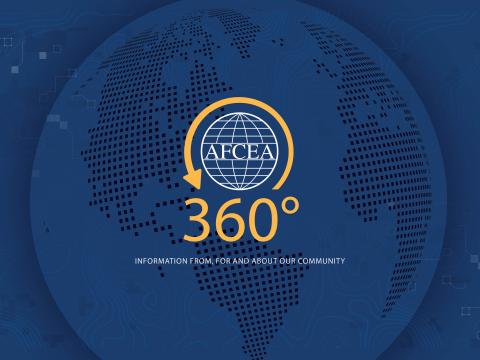IC VISION 2015: Too Little and Too Slow!
In late July the DNI released “VISION 2015: A Globally Networked and Integrated Intelligence Enterprise.” In his cover letter for this glossy 22 page nicely illustrated document Mike McConnell reminds us that the Intelligence Community (IC) “is still largely structured, staffed, and operated around a design optimized for a different era” and VISION 2015 is meant to lay out a path towards globally networked and integrated IC “based on the principles of integration, collaboration, and innovation.”
Let’s pass on why 17 years after the fall of the Berlin Wall and seven years since 9-11 the IC is still more geared to its Cold War legacy style of operations instead of the “new normal” that was decreed by President Bush after the World Trade Towers crumbled. Instead let’s focus on why it is going to take the IC seven years to achieve what is technologically possible today and if VISION 2015 is broad enough.
The four reasons the IC leadership sees it taking seven years to achieve what to me is a very rational and reasonable end state that will insure the IC is capable of providing “decision advantage” are articulated on the last page (pg 22) of VISION 2015. They are: culture, bureaucratic friction, budgetary, and the tyranny of the immediate.
Since the IC was only formed in 1947 and really didn’t take its current form until Executive Order 12333 was issued in 1981, I am not sure if the IC is much a prisoner of culture or bad habits. In any event the need for culture change in the IC can be traced back to the “fast track studies” then Director Central Intelligence (DCI) Robert Gates ran to redirect the IC after the fall of the
Friction caused by layers of bureaucracy is a redundant statement. Assuming radical change is not on the table, every level of IC management should be continually questioning (and justifying) what is “the value added” of each layer of organization in achieving “decision advantage.” I will turn to the budget next, but in the private sector when costs need to be cut the first place the ax comes is middle management because it invariably is providing the least value added in generating the end product or result. Other immediate efficiencies can be achieved through IC wide centralized management of classification regulations, security processes, human resources, and information technology. If radical change can be brought to the table (I believe it can and should be), then the IC should thoughtfully examine addition by subtraction. Simply put, 16 agencies may define a community but it’s about nine more than most texts on effective organization recommend for effective management. Rolling the four military services under DIA and the Cost Guard under DHS along with shifting Energy, Treasury, and DEA to “contributor” status cuts the IC literally in half ---- which should facilitate decision making and decision enforcement.
No one can argue that stable and predictable budgets are not essential to achieving any long term plan in government (or elsewhere). The question I have is, so what has the IC done to improve its ability to provide the nation with “decision advantage” over the past five years of significant budget increases and supplementals? The IC now should not be allowed to argue that a flat budget over next five years is keeping them from achieving the end state of Vision 2015; rather all in the IC should be continually reminded that at $44 billion dollars a year the National Intelligence Program (NIP) exceeds the entire defense budgets of all but a few nation states. It should be obvious that to achieve an “integrated intelligence enterprise” the IC should migrate from the current agency by agency approach of licensing information handling software (i.e. data bases, content management, identity management, etc.) to an IC wide enterprise license that legally allows the software to be used to share information with others, saves costs through centralized volume buying and improves performance through IC wide standards embedded in the software.
The tyranny of the immediate, in my view, is the single biggest cause of why Vision 2015 is not already a reality in the IC as money and people have cascaded to current threats such as terrorist identification/capture, weapons of mass destruction in
OK, so I don’t see the hurdles to achieving IC Vision 2015 mission of creating decision advantage through a globally networked and integrated intelligence enterprise as particularly daunting. This is probably because Vision 2015 infers to me that modernizing IC IT capabilities and taking advantage of them with comparable concepts of operations (CONOPS/i.e. “integrated mission management,” “adaptive collection,” and “collaborative analysis”) are what is needed to position the IC for future success. If IT is all that is wrong with the IC, then Vision 2015 is sufficient, but I believe the IC has a branding problem associated with the quality, objectivity, relevance and responsiveness of its products that IT alone cannot turnaround. With the now completed transition from the industrial age, a critical question for the IC as a “content provider” to decision makers for 2015 should be envisioning is “what are the unique types of information that only an intelligence service can provide in the information age?” Deep penetration with collection and analysis of targets adversaries are protecting from public knowledge, as recommended in the Robb-Silverman Commission report, comes immediately to mind here. Such deep penetration is more likely to be achieved through human access, specialized sensors, innovative data processing, and experience analysis than something out of “IT Networks and Enterprises for Dummies”
Because of the information centric nature of intelligence, state of the art IT is obviously important to the providing good intelligence for “decision advantage” or any other use, but at the end of the day IT is an IC mission enabler and not the mission of the IC. As important as transforming its IT to a state of the art networked enterprise is, it won’t mean much in 2015 unless it is part of a larger vision of restoring trust and confidence in the IC brand.
That’s what I think; what do you think?




Comment
Observation and opinions...
Thanks ET. I obviously agree
I like that Vision 2015 is an
The challenge for enterprise
Regarding 2015 Vision
"Vision 2015, when
Comments